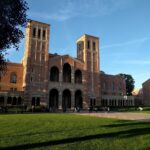Academics Investigate Priestly Abuse
A team of academics examined “The Causes and Context of Sexual Abuse of Minors by Catholic Priests, 1950-2010, but stopped short of doing just that. “No single ‘cause’ of sexual abuse of minors by Catholic priests is identified as a result of our research,” the report from the United States Conference of Catholic Bishops found. “Social and cultural changes in the 1960s and 1970s manifested in increased levels of deviant behavior in the general society and also among priests of the Catholic Church in the United States.”
A team of researchers from John Jay College compiled the report. They also found that “The priests who engaged in abuse of minors were not found, on the basis of their developmental histories or their psychological characteristics, to be statistically distinguishable from other priests who did not have allegations of sexual abuse against minors.” This is not a development that the average Catholic communicant might find helpful.
Nevertheless, the researchers report that “The count of incidents per year increased steadily from the mid-1960s through the late 1970s, then declined in the 1980s and continues to remain low.”
Moreover, in summary, the research team exempts Catholic celibacy rules from culpability in the crisis. “Features and characteristics of the Catholic Church, such as an exclusively male priesthood and the commitment to celibate chastity, were invariant during the increase, peak, and decrease in abuse incidents, and thus are not causes of the ‘crisis.’”
Still and all, their description of the perpetrators of abuse might strike some as hairsplitting. “Less than 5 percent of the priests with allegations of abuse exhibited behavior consistent with a diagnosis of pedophilia (a psychiatric disorder that is characterized by recurrent fantasies, urges, and behaviors about prepubescent children),” they note. “Thus, it is inaccurate to refer to abusers as ‘pedophile priests.’”
But their explanation is not very comforting. “Most sexual abuse victims of priests (51 percent) were between the ages of eleven and fourteen, while 27 percent were fifteen to seventeen, 16 percent were eight to ten, and nearly 6 percent were under age seven,” they report. “Over 40 percent of all victims were males between the ages of eleven and fourteen.”
“It is worth noting that while the media has [sic] consistently referred to priest-abusers as ‘pedophile priests,’ pedophilia is defined as the sexual attraction to prepubescent children. Yet, the data on priests show that 22 percent of victims were age ten and under, while the majority of victims were pubescent or post-pubescent.”
Similarly, though they make a glancing attempt to implicate the more restrictive standards of a bygone era, their own data show that the problem is more likely the byproduct of more relaxed mores. “Priests who lacked close social bonds, and those whose family spoke negatively or not at all about sex, were more likely to sexually abuse minors than those who had a history of close social bonds and positive discussions about sexual behavior,” they claim. “In general, priests from the ordination cohorts of the 1940s and 1950s showed evidence of difficulty with intimacy.”
Yet and still, the researchers from John Jay show that “Men ordained in the 1930s, 1940s, and 1950s did not generally abuse before the 1960s or 1970s.”
“Men ordained in the 1960s and the early 1970s engaged in abusive behavior much more quickly after their entrance into ministry.”
Malcolm A. Kline is the Executive Director of Accuracy in Academia.
If you would like to comment on this article, e-mail contact@academia.org




